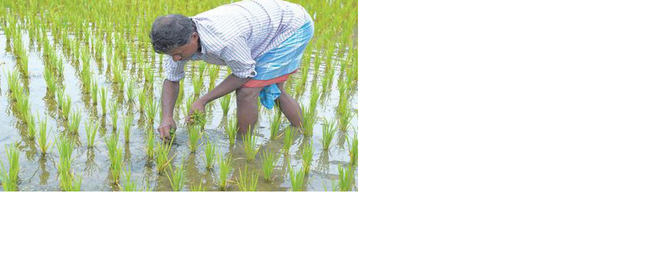Tomato Flu Outbreak in India (GS Paper 3, Science and Tech)

Why in news?
- While India continues to battle COVID-19 and monkey pox, a new virus known as tomato flu, or tomato fever, has emerged in India in the state of Kerala in children younger than five years.
- The rare viral infection is in an endemic state and is considered non-life threatening.
States affected:
- According to reports, 82 kids below five years of age have been infected so far. Tomato flu is a self-limiting illness and no specific drug exists to treat it.
- Additionally, 26 children (aged 1–9 years) have been reported as having the disease in Odisha by the Regional Medical Research Centre in Bhubaneswar.
- To date, apart from Kerala, Tamil Nadu, and Odisha, no other regions in India have been affected by the virus. However, precautionary measures are being taken by the Kerala health department to monitor the spread of the viral infection and prevent its spread in other parts of India.
Symptoms:
- The virus could also be a new variant of the viral hand, foot, and mouth disease, a common infectious disease targeting mostly children aged 1–5 years and immunocompromised adults.
- Although the tomato flu virus shows symptoms similar to those of COVID-19 (both are associated with fever, fatigue, and body aches initially, and some patients with COVID-19 also report rashes on the skin), the virus is not related to SARS-CoV-2. Tomato flu could be an after-effect of chikungunya or dengue fever in children rather than a viral infection.
- Symptoms include, besides fever, fatigue, and body aches, rashes that lead to skin irritation.
- As with other viral infections, further symptoms include, nausea, vomiting, diarrhoea, dehydration, swelling of joints, body aches, and common influenza-like symptoms, which are similar to those manifested in dengue.
Origin:
- The tomato flu was first identified in the Kollam district of Kerala on 6 May, 2022.
- The disease gets its name on the basis of the eruption of red and painful blisters throughout the body that gradually enlarge to the size of a tomato. These blisters resemble those seen with the monkeypox virus in young individuals.
Treatment:
- Owing to its similarity to chikungunya and dengue as well as hand, foot, and mouth disease, treatment is also similar to them; isolation, rest, plenty of fluids, and hot water sponge for the relief of irritation and rashes.
- Supportive therapy of paracetamol for fever and body ache and other symptomatic treatments are required.
Susceptible group:
- According to the study, children are at increased risk of exposure to tomato flu as viral infections are common in this age group and likely to spread through close contact.
- Young children are also prone to this infection through use of nappies, touching unclean surfaces, as well as putting things directly into the mouth.
Prevention:
- Isolation should be followed for five to seven days from symptom onset to prevent the spread of infection to other children or adults.
- The best solution for prevention is the maintenance of proper hygiene and sanitisation of the surrounding necessities and environment as well as preventing the infected child from sharing toys, clothes, food, or other items with other non-infected children.
- Drug repurposing and vaccination are the most efficacious and ensure the safety of public health from viral infections, especially in children, older people, immunocompromised people, and those with underlying health issues.
Way Forward:
- Given the similarities to hand, foot, and mouth disease, if the outbreak of tomato flu in children is not controlled and prevented, transmission might lead to serious consequences by spreading in adults as well. Similar to other types of influenza, tomato flu is very contagious.
- Hence, it is mandatory to follow careful isolation of confirmed or suspected cases and other precautionary steps to prevent the outbreak of the tomato flu virus from Kerala to other parts of India.
Impact of FIFA suspension on Indian football
(GS Paper 2, International Organisation)
Why in news?
- Recently, world football’s governing body FIFA suspended the All India Football Federation (AIFF) indefinitely for “undue interference by a third party” in the process to finalise a new constitution and elect office-bearers.
Committee of Administrators (CoA):
- The third party in question was the Supreme Court of India-appointed Committee of Administrators (CoA), comprising Justice (retd.) Anil Dave, former Chief Election Commissioner S.Y. Quraishi and former Indian football captain Bhaskar Ganguly, formed in May to temporarily assume charge of AIFF after the previous establishment, led by president Praful Patel, was deemed to have overstayed the National Sports Development Code of India-mandated 12-year tenure.
- If AIFF’s suspension is not revoked in time, India will lose the rights to host the U-17 Women’s World Cup in October.
What constitutes undue interference?
- International sports federations like FIFA view any governance structure where an unelected body wields power at a national sports federation like AIFF as third-party interference.
- In exceptional cases where such a body, in the present case, the CoA, takes charge, it is required to play a temporary, enabling role in line with the statutes of the international body.
- Ever since the CoA presented the draft constitution to FIFA on July 13, the latter has suggested multiple changes. Chief among them was a repeal of CoA’s decision to give players and State associations equal representation (50%) in the electoral college (36 votes each).
- The Sports Code mandates a minimum of 25% representation for players in decision-making
- FIFA also took issue with the move to elect an interim body for three months just for the conduct of the World Cup, while the constitution is finalised parallelly.

How did the CoA react?
- The CoA expressed “surprise and disappointment” that FIFA’s decision had come even as extensive discussions were ongoing between FIFA, CoA and the Union Sports Ministry.
- The CoA said it was agreeable to conduct elections with an electoral college consisting of just 36 State representatives and give players representation as nominated members in the Executive Committee as desired by FIFA.
- The CoA also assured FIFA that the interim Executive Committee would function independently and will not be supervised by the former.
- However, the electoral college after the FIFA suspension was announced, had as many as 69 members, including 36 players. It is understood that changes to the draft constitution to bring it in line with FIFA recommendations will need the Supreme Court’s nod.
What are the repercussions of the suspension?
- While the biggest threat is to the conduct of the U-17 Women’s World Cup, Gokulam Kerala FC not being allowed to play in the ongoing AFC Women’s Club Championship in Uzbekistan is the first significant blow.
- ATK Mohun Bagan’s participation in the AFC Cup (September 7) is also in doubt, so are India’s scheduled international friendlies against Vietnam and Singapore next month.
- Developmental funding from FIFA and the Asian Football Confederation will stop. Indian clubs cannot sign foreign players and Indian officials will not be eligible for international assignments.
Will the court intervention set a precedent for other sports in India?
- In 2022 alone, table tennis, hockey and judo have been placed under court-appointed CoAs for not following the Sports Code.
- A day after AIFF’s suspension, the Delhi High Court brought the Indian Olympic Association (IOA) under a CoA.
- But the Supreme Court ordered a status quo after the Union government stated that the International Olympic Committee could see the development as “third-party interference”.
Will it change future sports governance models in the country?
- Regardless of the turn each of the above cases take, there is an underlying acceptance in the Indian sports administration fraternity that adherence to the Sports Code is non-negotiable. Whether courts should intervene is a matter for debate.
- But both FIFA and FIH (world hockey’s governing body) did not object to court-appointed committees. FIFA had a problem only with the terms of reference. FIH, on the other hand, was welcoming and went to the extent of saying, “the order of a court is not an interference.”
Revision of electoral rolls in J&K
(GS Paper 2, Polity and Governance)
Why in news?
- Recently, the J&K Chief Electoral Officer (CEO) announced that anyone “who is living ordinarily in J&K” can avail the opportunity to get enlisted as a voter in the Union Territory in accordance with the provisions of the Representation of the People Act.
- He said that many people who were not enlisted as voters in the erstwhile State of J&K are now eligible to vote after the reading down of Article 370 on August 5, 2019.
- The Election Commission of India (ECI) was expecting an addition of 20-25 lakh new voters in the final list in J&K.

Who else is eligible to vote?
- He suggested that armed forces posted in J&K could also register as voters and could possibly participate in the first ever Assembly polls in the youngest Union Territory (UT) of the country.
- The existing electoral roll is being mapped into the newly delimited Assembly constituencies as per the Delimitation Commission’s final order made applicable by the Union Law Ministry with effect from May 20, 2022.
Why are electoral rolls being revised?
- The ECI is working on fresh electoral rolls in J&K after the J&K Delimitation Commission earlier 2022 carved out seven new Assembly constituencies in the UT, six going to Jammu division and one to Kashmir, under the Jammu & Kashmir Reorganisation Act adopted in 2019.
- Jammu now has 43 seats against 47 in Kashmir. The Delimitation Commission has re-drawn many constituencies and fresh electoral rolls are essential to prepare the ground for any announcement of elections in J&K, where the last Assembly elections took place in 2014.
- In a latest move, the ECI has decided that it will also include any person who has attained the age of 18 years on or before October 1, 2022 in the fresh electoral rolls. The final electoral roll would be published on November 25.
What did the CEO announce?
- He said there is no need for a person to have a domicile certificate of J&K to become a voter. An employee, a student, a labourer or anyone from outside who is living ordinarily in J&K can enlist his or her name in the voting list.
- The armed forces from different parts of the country “have the option that if they are posted in a peace station they can enlist themselves as voters.”
- He observed that around 25 lakh new voters are expected to be enrolled in J&K, which has 76 lakh voters on the list. The projected 18-plus population of J&K was around 98 lakh.
- After the abrogation of special provisions of Article 370, the Representation of the People Act 1950 and 1951 is applicable in J&K, which allows ordinarily residing persons to get registered in the electoral rolls of J&K, “provided he or she gets their name deleted from the electoral roll of his or her native constituency.”
How were the J&K electoral rolls revised prior to 2019?
- Prior to August 5, 2019 when J&K had special constitutional powers, the Assembly electoral rolls in the State were drawn up according to the Jammu & Kashmir Representation of the People Act 1957, wherein only permanent residents of J&K were eligible to get registered in the Assembly rolls.
- To get voting rights, Permanent Resident Certificate and domicile certificates had to be shown.
- Several lakh residents from West Pakistan and Pakistan Occupied Kashmir, who had migrated to J&K and were living there for many decades, had no voting rights in Assembly elections till August 5, 2019 but were able to vote in the parliamentary elections.
Why has the ECI announcement caused a furore?
- All political parties in J&K, except the BJP, have reacted sharply to the ECI announcement.
- J&K's main regional parties, including the National Conference, Peoples Democratic Party, CPI(M) and Peoples Conference, have expressed concerns that the move will open the floodgates and turn locals into an electoral minority.
- Former Chief Minister expressed concern that there was a plan to bring 25 lakh non-locals and make them eligible to cast their votes in the next J&K elections.
Improving rice yield with an additional gene
(GS Paper 3, Science and Tech)
Why in news?
- A transcriptional regulator that boosts grain yields and shortens the growth duration of rice has been in news.
- The supercharged biotech rice yields 40% more grain.
Details:
- This report points out that giving a Chinese rice variety a second copy of one of its own genes has boosted its yield by up to 40%.
- When a second copy of a single gene (called OsDREB1C ) is added to rice, it improves photosynthesis and nitrogen use, speeds up flowering and absorbing nitrogen more efficiently—offering larger and more abundant grains.
- The change helps the plant absorb more fertilizer, boosts photosynthesis, and accelerates flowering, all of which could contribute to larger harvests.

Green Revolution and aftermath in India:
- The Green Revolution of the 1960s brought about a marked improvement in the yield of agricultural crops such as rice and wheat.
- It was based on the use of newly developed high-yielding crop varieties in conjunction with the intense use of irrigation, chemical fertilizers and pesticides. India saw a three-fold increase in rice yield per hectare.
- Now, fifty years later, some negative effects of this intense methodology are becoming apparent—nitrogen fertilizers and agrochemicals pose environmental hazards; water is often in short supply; and agricultural soil is increasingly fatigued.
- To obtain more food for the world’s growing population, forests and grasslands would have to be converted to farms in order to produce food. This, in turn, would enormously strain our ecosystems.
India’s rice exports:
- India is the world’s largest exporter of rice. It exported 18.75 million metric tons to over 150 countries during the year 2021-22, thereby earning $6.11 billion.
- With growing demand in the coming years, strategies should be found to increase the production and export of rice.
- Vietnam turns out to be the second most producer of rice, and it produced 6.5 million tonnes in 2021-2022. It has to be much more than the 18.75 million tons for India to continue and expand its role as the world’s largest producer and exporter of rice.
Gene modulation:
- A key point is that the researchers have added the same gene again, and not any foreign one. This is best described as genetic modulation. It is not a genetic modification (GM) and neither is the result a transgenic plant, carrying elements from another donor.
- This is particularly relevant to India, which must aim to continue its world position in the production of rice and marketing.
- India has exempted crops with certain kinds of genetic modifications from the regulations previously imposed on the commercialisation of all genetically modified crops.
- For example, BT cotton involves the transfer of the gene from the bacterium called Bacillus thurigiensis (BT) to be transferred to normal cotton. India’s Agriculture Ministry has pointed out in 2019 that they have allowed transfer of this foreign gene to normal cotton, produce the BT cotton, which is then manufactured and sold both in India and abroad.
- India will import 1.2 million tons of genetically modified (GM) soyabeans for livestock feed. Now, if the ministry allows the import of GM soyabean from abroad, why should it not allow the manufacture of this in India itself.
Way Forward:
- India has some excellent rice researchers located in Andhra Pradesh, Karnataka, Punjab and Haryana, and genetic engineers in several laboratories across the country.
- The Ministry of Agriculture can come together with the Department of Biotechnology (DBT) and nutritionists from the Indian Council of Medical Research (ICMR) can support these researchers to augment India’s role as the major rice exporter in the world.





